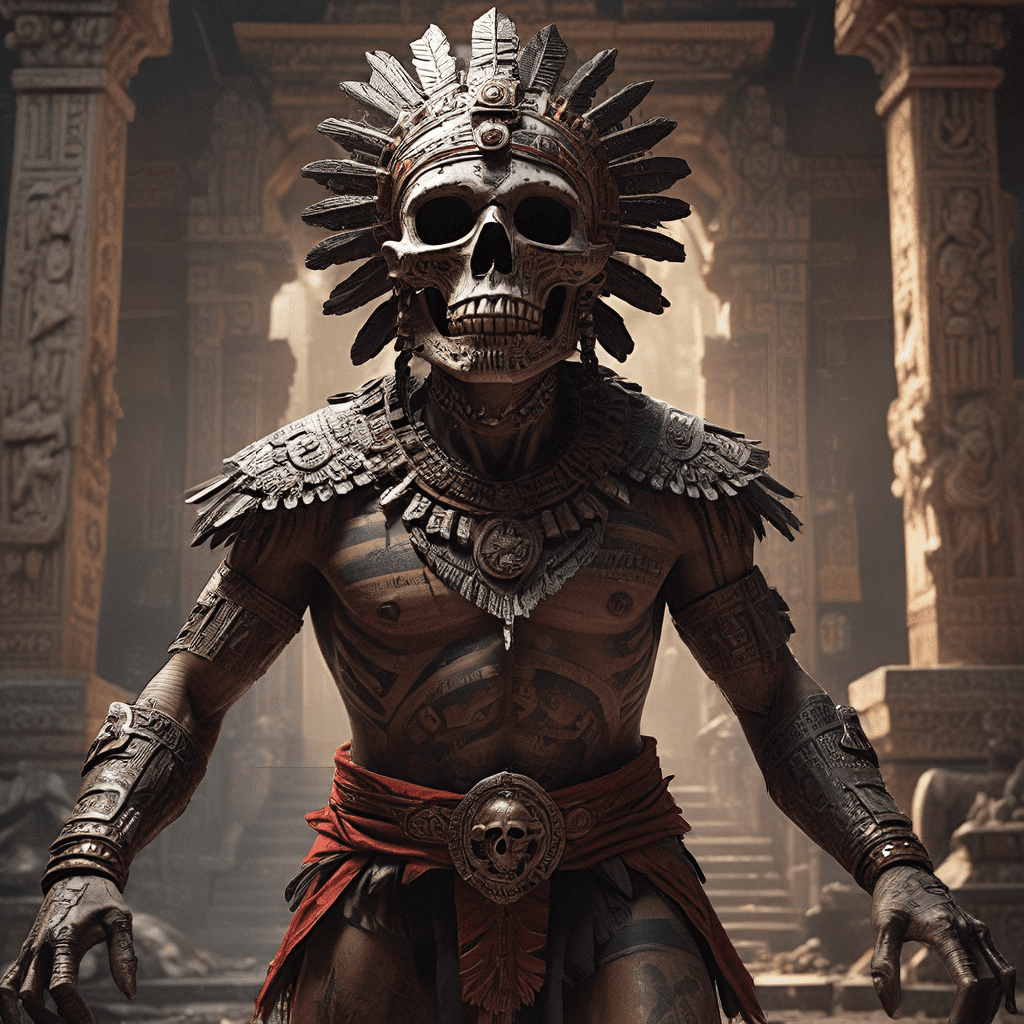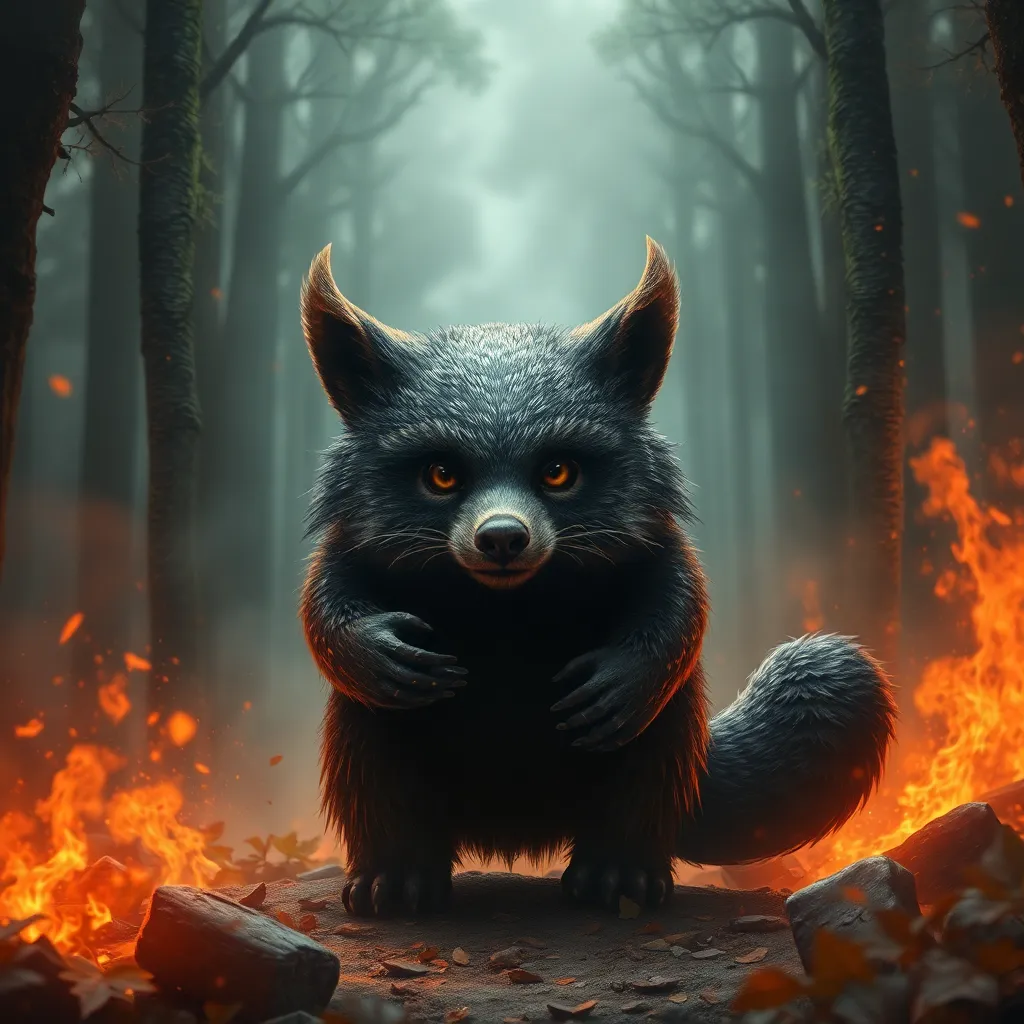The Underworld: A Mythical Exploration of Fear and Courage
I. Introduction to the Underworld
The Underworld, a realm often shrouded in darkness and mystery, holds significant meaning across various mythologies. It serves as the final resting place for souls, a domain where the living dare not tread, and a representation of the unknown. This mythical landscape embodies the duality of fear and courage, challenging individuals to confront their innermost anxieties and hidden strengths.
In exploring the Underworld, we delve into the complexities of the human psyche. The journey through this mythical realm reflects our struggles, fears, and the courage it takes to overcome them. By examining the Underworld, we gain insight into the universal themes that resonate within us all.
II. Historical Perspectives on the Underworld
Throughout history, ancient civilizations have crafted interpretations of the Underworld that reflect their cultural beliefs and values. These interpretations reveal much about humanity’s relationship with death, the afterlife, and the moral implications of one’s actions.
A. Ancient civilizations and their interpretations
- Mesopotamian: The Underworld, known as Kur, was a dreary place where the dead resided in a shadowy existence, devoid of joy.
- Egyptian: The concept of the Duat was more nuanced, featuring elaborate rituals and a belief in judgment by Osiris, determining the fate of the soul.
B. Greek and Roman concepts of the Underworld
In Greek mythology, the Underworld, ruled by Hades, was divided into several regions, including Elysium for the virtuous and Tartarus for the damned. Roman interpretations mirrored this but added layers of bureaucracy and legalism to the afterlife.
C. Comparisons with Eastern philosophies
Eastern philosophies, such as Hinduism and Buddhism, introduce concepts like Naraka and the cycle of rebirth, emphasizing moral consequences and ongoing personal evolution.
III. Symbolism of the Underworld in Mythology
The Underworld serves as a powerful symbol of the subconscious mind, representing our fears, desires, and the unknown aspects of ourselves.
A. The Underworld as a representation of the subconscious
In many myths, the Underworld is a place where characters confront their inner thoughts and emotions, facing the parts of themselves they often choose to ignore.
B. Archetypes of fear
- Monsters: Creatures that embody our deepest fears.
- Guardians: Figures that challenge and test the hero’s resolve.
- Lost souls: Representations of regret and the consequences of one’s actions.
C. The role of courage in navigating the Underworld
Courage becomes essential for characters seeking to transcend their fears and emerge transformed from their Underworld journeys.
IV. Famous Myths Involving the Underworld
Various myths illustrate the complexities of the Underworld and its themes of love, loss, and the quest for understanding.
A. The Epic of Gilgamesh
In this ancient tale, Gilgamesh’s quest for immortality leads him to the Underworld, where he learns the futility of escaping death and the importance of accepting one’s mortality.
B. Orpheus and Eurydice
The tragic love story of Orpheus, who ventures into the Underworld to retrieve his beloved Eurydice, highlights the themes of love and the consequences of looking back on one’s journey.
C. The Twelve Labors of Heracles
Heracles’ descent into Hades is a testament to his strength and determination, showcasing the trials heroes face and the courage required to confront formidable challenges.
V. The Underworld as a Metaphor for Personal Struggles
The concept of the Underworld extends beyond mythology, serving as a metaphor for the personal struggles individuals face throughout life.
A. Facing inner demons and fears
Just as heroes confront monsters in the Underworld, individuals must face their inner fears to achieve personal growth.
B. The journey through grief and loss
The Underworld symbolizes the emotional turmoil associated with grief, reflecting the journey toward acceptance and healing.
C. Transformation and rebirth
Emerging from the Underworld often signifies transformation, where individuals find new strength and courage amidst their trials.
VI. Cultural Variations of the Underworld
Different cultures have unique interpretations of the Underworld, illustrating diverse beliefs about the afterlife and human existence.
A. The Afterlife in different cultures
- Valhalla: In Norse mythology, a hall for warriors who died heroically.
- Naraka: In Hinduism, a realm of torment for those who have committed sins.
B. Contemporary interpretations in literature and film
Modern storytelling often revisits Underworld themes, using them to explore complex human emotions and societal issues.
C. The Underworld in modern spiritual practices
Many spiritual practices incorporate Underworld motifs, encouraging individuals to confront their fears and seek personal enlightenment.
VII. Psychological Interpretations of the Underworld
The Underworld also finds relevance in psychological theories, particularly in understanding the human mind.
A. Carl Jung and the concept of the Shadow
Jung’s Shadow represents the darker aspects of the psyche, paralleling the Underworld’s themes of fear and hidden truths.
B. The Underworld in dream analysis
Dreams of the Underworld often reflect personal struggles and unresolved issues, prompting introspection and healing.
C. Fear and courage in overcoming psychological barriers
Confronting fears within the Underworld metaphor can lead to profound personal growth and emotional resilience.
VIII. The Role of Heroes in Underworld Myths
Mythological heroes often embark on journeys to the Underworld, facing trials that test their character and resolve.
A. Characteristics of mythological heroes
- Bravery in the face of adversity.
- Wisdom gained through experience.
- Empathy for others’ struggles.
B. The trials faced by heroes in the Underworld
These trials often serve as metaphors for personal challenges, highlighting the importance of perseverance and courage.
C. Lessons learned from their journeys
Heroes emerge from the Underworld transformed, embodying the courage required to face their fears and the wisdom to guide others.
IX. The Underworld’s Influence on Modern Society
The themes of fear and courage found in the Underworld resonate in contemporary culture, influencing various forms of media and personal development.
A. Themes of fear and courage in pop culture
Movies, books, and art frequently explore Underworld motifs, reflecting society’s ongoing struggles with fear and the pursuit of courage.
B. The Underworld in video games and interactive media
Many games utilize Underworld themes, allowing players to confront fears and make choices that impact their journeys.
C. The relevance of Underworld motifs in personal development
Understanding the Underworld’s symbolism can empower individuals to confront their fears and embrace personal growth.
X. Conclusion: Embracing Fear and Courage through the Lens of the Underworld
In conclusion, the Underworld serves as a rich metaphor for the human experience, encapsulating the duality of fear and courage. By exploring its themes, we can better understand our struggles and the courage required to navigate life’s challenges. Embracing the lessons from the Underworld allows us to confront our fears and emerge stronger, embodying the resilience that defines the human spirit.



